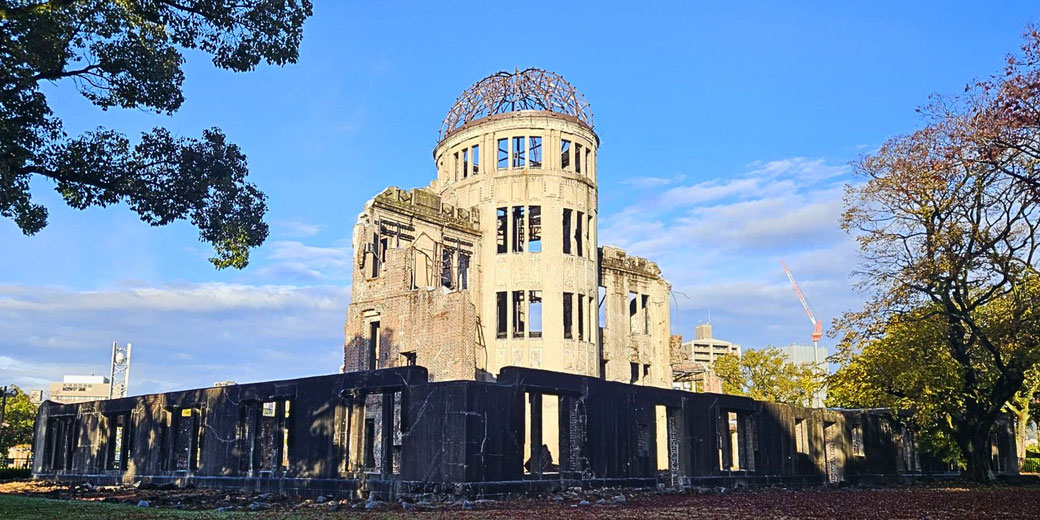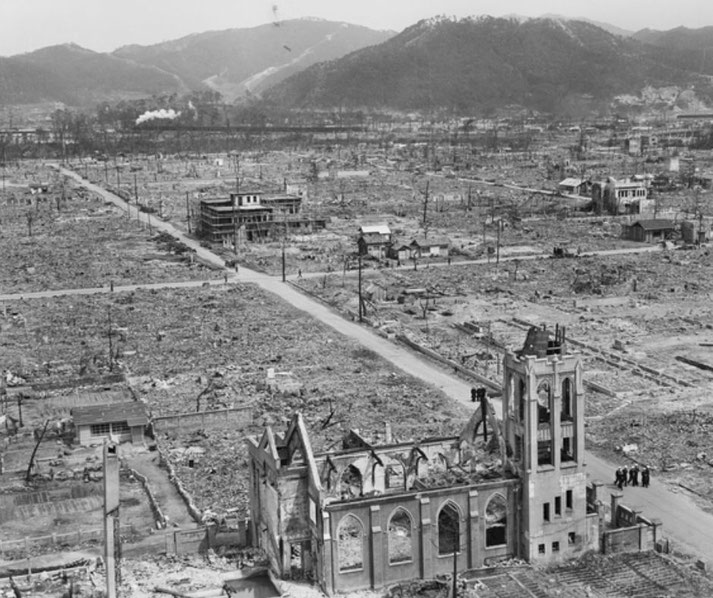The day the sun rose twice: Hiroshima and the first horrifying time an atomic bomb was dropped

A plane flying high above a Japanese metropolis carried humanity’s most terrifying invention into reality on August 6, 1945.
The ensuing blast unleashed a heat and force unlike anything ever witnessed, instantly transforming everyday streets into landscapes of ruin.
As the survivors struggled through radiation sickness and unimaginable loss, the promise of technological progress took on an ominous new dimension.
What motivated the development of atomic weapons?
During the late 1930s, physicists in Europe investigated the process of nuclear fission.
In December 1938, Otto Hahn and Fritz Strassmann achieved the first experimental nuclear fission in Berlin, and Lise Meitner with Otto Frisch interpreted the results, realising that uranium atoms could split and release vast amounts of energy.
From that moment, fears grew that Nazi Germany might attempt to construct a new class of weapon.
On 2 August 1939, Albert Einstein and physicist Leó Szilárd signed a letter to United States President Franklin D. Roosevelt, which Alexander Sachs delivered, warning that Germany might pursue an atomic bomb.
As a result of this letter, the United States launched early research programs to explore nuclear weapons.
By 1942, the United States had committed itself to building such a weapon, and the Manhattan Project became one of the largest scientific undertakings in history.
Directed by General Leslie Groves and guided by scientists such as J. Robert Oppenheimer and Enrico Fermi, the project cost about $2 billion, which equals roughly $25 to $30 billion today.
At sites in Oak Ridge, Tennessee, Hanford, Washington, and Los Alamos, New Mexico, more than 130,000 people worked in strict secrecy.
The first successful atomic bomb test, codenamed Trinity, took place on 16 July 1945 in the New Mexico desert.
For political and military leaders, the weapon offered a way to end the war quickly and avoid an invasion of Japan, which they believed would lead to immense casualties on both sides.
The agonising decision about whether to use the bomb
After Germany’s surrender in May 1945, the United States faced the question of whether to use the atomic bomb against Japan.
By that stage, Japanese forces had suffered catastrophic defeats, yet the government gave no indication of surrendering unconditionally.
In the minds of Allied planners, an invasion of the Japanese home islands promised heavy losses among both soldiers and civilians.
As the debate unfolded, President Harry S. Truman heard arguments from military and political leaders who believed that dropping the bomb would force Japan to surrender.
The Interim Committee, which included Secretary of War Henry Stimson and General George Marshall, advised Truman to use the bomb without prior warning.
Among the scientists who had worked on the Manhattan Project, many expressed moral objections to using such a weapon against a populated city.
At the same time, some officials suggested detonating the bomb on an uninhabited area to demonstrate its power.
Because they feared that such a demonstration might fail to convince Japan’s leaders or might fail technically, the administration decided to strike a city instead.
By late July 1945, Truman had authorised the use of the bomb.
The fateful day when Hiroshima was bombed
On 6 August 1945, the B-29 bomber Enola Gay took off from the island of Tinian which carried a single uranium bomb nicknamed Little Boy.
The weapon contained about 64 kilograms of enriched uranium, of which less than a kilogram underwent fission.
At 8:15 a.m., the aircraft reached Hiroshima, which had a population of about 350,000 people, and released the bomb.
It detonated at approximately 1,900 feet above the city. In less than a second, a blinding flash lit up the sky.
Survivors later described the explosion as a second sun that appeared over the city.
The bomb released energy equivalent to about 15 kilotons of TNT.
For American planners, Hiroshima had been chosen because it contained military facilities and had not yet been bombed in the air campaign.
As the bomb exploded almost directly over the city centre, its destructive power reached its full effect.
Across a radius of more than two kilometres, the shockwave flattened buildings and, in seconds, fires erupted and destroyed entire neighbourhoods.
Because most houses were wooden, flames spread with terrifying speed, and thousands of people were incinerated instantly.

The horrifying destruction caused by the blast
By the end of that day, historians estimate that around 70,000 to 80,000 people had died.
Among the survivors, many suffered burns so severe that their skin peeled away in strips.
As days passed, radiation sickness claimed even more lives. Victims vomited repeatedly, lost their hair, and suffered internal bleeding.
Across the shattered city, hospitals collapsed under the strain of so many wounded, and medical supplies vanished almost immediately.
For the military observers who arrived in the following weeks, the scale of devastation was beyond anything they had imagined.
Across Hiroshima, about 69 per cent of buildings lay in ruins, and within 1.6 kilometres of ground zero almost all structures were destroyed.
In the centre of the blast zone, temperatures had reached around 3,000 to 4,000 degrees Celsius, which melted steel and fused roof tiles.
On walls and pavements, the shadows of people burned into the surfaces revealed the intensity of the heat.
By the end of 1945, the total death toll likely reached between 90,000 and 166,000.
Since entire families had been erased without record, the full human toll could never be known.
The bombing of Nagasaki and Japan's surrender
Three days after Hiroshima, the United States dropped a second atomic bomb on the city of Nagasaki.
This one, named Fat Man, used plutonium-239 and contained about 6.2 kilograms of the isotope. It had a yield of about 21 kilotons.
Due to Nagasaki’s surrounding hills, the destruction covered a smaller area than at Hiroshima, yet about 35,000 to 40,000 people died instantly.
At the time, Nagasaki had a population of roughly 240,000 to 260,000 people and, by the end of 1945, the total deaths likely reached between 60,000 and 80,000.
Next, on 8 August 1945, the Soviet Union declared war on Japan and invaded Manchuria, further pressuring Japan’s leaders to surrender.
On 15 August 1945, Emperor Hirohito announced Japan’s surrender in a radio broadcast known as the Jewel Voice Broadcast.
For the first time in history, the Japanese people heard their Emperor’s voice.
However, after almost six years of world war, the announcement brought the Second World War to an end.
For Japan’s leaders, the atomic bombings confirmed that further resistance would lead to total destruction.
What lessons were learnt from Hiroshima?
In the decades after 1945, the bombings of Hiroshima and Nagasaki changed how governments dealt with other countries and how generals planned military actions.
As the world entered the nuclear age, nations understood that such weapons threatened humanity itself.
After only a few years, the Soviet Union developed its own bomb, and an arms race began that defined the Cold War.
As the threat of nuclear conflict grew, treaties such as the 1963 Partial Test Ban Treaty and the 1968 Nuclear Non-Proliferation Treaty attempted to limit the spread of nuclear weapons.
In 1996, Hiroshima’s Atomic Bomb Dome, known as the Genbaku Dome, became a UNESCO World Heritage Site.
What do you need help with?
Download ready-to-use digital learning resources
Copyright © History Skills 2014-2025.
Contact via email
With the exception of links to external sites, some historical sources and extracts from specific publications, all content on this website is copyrighted by History Skills. This content may not be copied, republished or redistributed without written permission from the website creator. Please use the Contact page to obtain relevant permission.





